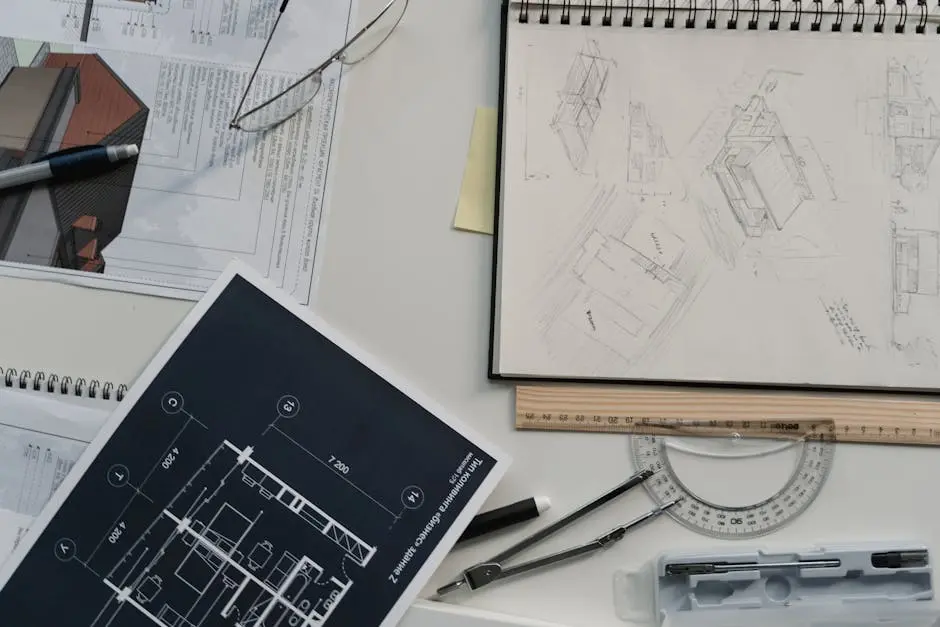Graphic design is more than just making things look pretty. It’s about communication, aesthetics, and problem-solving. Whether you’re a budding designer or someone interested in the visual world around you, understanding the essential elements of effective graphic design is key. In this blog post, we will explore eleven crucial components that can elevate your designs from ordinary to extraordinary.
1. The Power of Color in Design
Color is one of the most impactful elements in graphic design. It evokes emotions and sets the mood of your design. Understanding color theory can help you create palettes that resonate with your audience. For instance, warm colors like red and orange can create a sense of urgency, while cool colors like blue and green can evoke calmness and trust. Picking the right color scheme can significantly influence how your design is perceived.
Moreover, colors can also convey cultural meanings. What may be seen as a celebratory color in one culture might have a completely different connotation in another. This is why it’s essential to consider your target audience when choosing colors. As a designer, using color effectively means embracing these complexities and crafting hues that not only align with the message you want to convey but also speak to the audience’s cultural and emotional sensibilities.
2. Typography That Speaks
Choosing the right font can make or break your design. Typography is not just about legibility; it also conveys your brand’s personality. Explore various typefaces and learn how to pair them effectively. Have you ever noticed how some fonts give off a sense of fun and whimsy, while others feel serious and traditional? Lighting up your audience’s understanding of typography means knowing when and where to use each type.
Furthermore, pay attention to size, spacing, and weight. These elements play a significant role in readability and can drastically change the tone of your message. For instance, a bold typeface can draw attention and impart urgency, making it perfect for headlines and CTAs. Conversely, a lighter, more elegant font can create a softer, more approachable feel. Choose wisely, and don’t hesitate to experiment!
3. Importance of White Space
White space, or negative space, is crucial in creating breathing room around your design elements. It helps in building a clear hierarchy and makes your design more digestible. Think of white space as the silent pause in a piece of music. It may seem unimportant at first, but it is essential for the melody to be understood and appreciated.
Too much clutter can overwhelm your audience, while well-placed white space can guide the viewer’s eye toward what really matters. In the digital age, where attention spans are short, harnessing the power of white space means giving your audience a break, allowing them to absorb and engage with the content you are presenting.
4. Visual Hierarchy in Design
Establishing a visual hierarchy guides viewers through your content. Utilize size, contrast, and placement to emphasize the most important aspects of your design. For example, larger text often indicates significance, while smaller text may guide readers to supporting details. By strategically positioning elements, you can create a natural flow that leads the viewer’s eyes through your content.
Visual hierarchy is not just a design principle but a fundamental aspect of good communication. It suggests to your audience what to focus on and what can be skimmed over, making their experience far more efficient. This makes understanding the principles of visual hierarchy essential for any designer aiming for clarity and engagement.
5. Creating Balance and Alignment
Balance and alignment contribute to the overall composition of your design. Whether symmetrical or asymmetrical, achieving balance helps create a sense of stability and professionalism. Symmetrical designs, for example, can evoke a traditional or formal feel, while asymmetrical designs can feel more dynamic and modern.
Moreover, alignment is often overlooked but plays a crucial role. Proper alignment creates a sense of order and can tie disparate elements together meaningfully. As you work on your designs, keep in mind that every element should have a visual relationship to one another, leading to a more cohesive and appealing layout.
6. The Role of Imagery and Graphics
Images and graphics play a vital role in capturing attention and conveying messages. Choose high-quality visuals that complement your design and support your content. The right image can relay feelings that words cannot, adding depth and narrative to your design.
Consider this: when you scroll through social media, it’s often the striking visuals that catch your eye first. This principle holds true across all platforms. High-quality imagery can enhance your message and give your audience more context about what you’re trying to convey, creating a richer experience overall.
7. The Significance of Contrast
Contrast is key to making certain elements stand out. Whether through color, size, or texture, using contrast effectively ensures that important information is easily noticeable. For example, a brightly colored button on a neutrally toned background commands attention and prompts action.
Moreover, contrast isn’t just about colors; it’s also about combining different shapes, sizes, and fonts to create interest and visual excitement. Think of it as the spice that brings a dish to life—too little and your design feels bland, too much and it can become chaotic. Striking a perfect balance with contrast will elevate your designs significantly.
8. Consistency Across Design Elements
Consistency builds trust and familiarity. Stick to a cohesive style, including colors, fonts, and graphic elements, to create a unified look across all materials. This consistency is especially important in branding; it reinforces your brand identity and aids in recognition.
Furthermore, consumers begin to associate quality and reliability with brands that maintain consistency. Over time, these associations lead to a stronger bond and loyalty between the brand and its audience. Therefore, consistency isn’t just visually appealing—it’s a crucial part of establishing a brand’s credibility and trustworthiness.
9. Utilizing Grids and Layouts
Grids provide structure to your designs. By organizing your elements within a grid, you can create a clean and visually appealing layout that enhances readability. Think of grids like the framework of a building; they ensure everything is in place and can handle the design’s weight without collapsing under chaos.
Layouts derived from grids help you create designs that are not only functional but also aesthetically pleasing. Simply aligning elements along a grid can improve user experience significantly, making content much easier to digest. It’s a game-changer in providing a sense of order in your designs.
10. Emphasizing the Call to Action
Your call to action (CTA) should not only be clearly visible but should also invite interaction. Use strong visual cues to attract attention and motivate viewers to engage. A well-placed button can be the difference between a casual scroll and a committed click, so make it pop!
Additionally, incorporate compelling language and design around your CTA. The message should be direct but inviting and resonate with your audience’s needs and expectations. By crafting a strong and appealing call to action, you turn passive observers into active participants.
11. Feedback and Iteration in Design
The design process is iterative. Gather feedback and be willing to make changes that improve your work. Embrace constructive criticism as a vital part of your growth as a designer. With each iteration, you’re not just refining your design; you’re also enhancing your skills and understanding of what works.
Moreover, engaging with your audience and peers allows you to gain different perspectives that can inform your design choices. This approach turns feedback into an invaluable resource for improvement, rather than just a minor annoyance. Embrace feedback, and watch your designs evolve!


